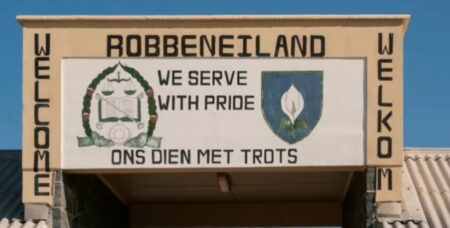1984 was a time of deep unrest in South Africa. The Apartheid regime seemed determined to hold on to power. Nelson Mandela was incarcerated on Robben Island, while many others were being murdered, as they clamoured for their rights. Skin colour was an arbitrary excuse for stark injustice and matters were coming to a point of no return.

It was into this situation that an invitation was given from the Franciscan priests in the Dundee Diocese to the Mercy Sisters in Clonfert. The priest who visited Loughrea knocked at an open door. The Leader at that time, Loreto McLoughlin, tells of how the process moved quickly to the stage of selecting women from the many who volunteered to be part of this new, possibly dangerous, venture.
There had been an established community of Mercy Sisters in the region of Johannesburg/Pretoria since 1897. They welcomed the Clonfert Sisters, even to vacating their house in Boksburg for a month, so that the new group could use it during their preliminary studies. The new community moved into the more Southerly area of Dundee where they had been invited, and the friendship between the two groups deepened. In time, when our new Congregation was being formed in 1994, they could merge easily.
 Foundations and Projects from 1987 to 2004 by the Clonfert Sisters
Foundations and Projects from 1987 to 2004 by the Clonfert Sisters
The first five women were chosen because of their distinct skills. Maura Staunton, a Domestic Science Instructor, went on to spend thirty-three years in her adopted country; Claire Walsh (now a member of the South Central Province) a nurse, began to develop health facilities; Bridie Mahony (now living in Saint Vincent’s, Galway), a teacher, was a natural choice to share literacy skills; Marie McIntyre, worked in Catechetics, later ministering in Durban, a holiday home. Colette Murray (now deceased), a Montessori teacher. Áine Lohan (recently returned to Ireland, living in Cois Abhann, Athlone, Co Westmeath) joined the community a little later, spent many years in the realm of youth education. The ministry of visitation in the Townships was very important to each of the Sisters, especially during the HIV AIDS pandemic, which emerged soon after their arrival.

Colette RIP was a natural choice to be invited to move to South Africa from Kenya, where she had been in ministry with a community of Ursuline Sisters. That experience was a help when she found that crèche work in her new home was only seen as keeping children quiet. She introduced new methodology, to everyone’s benefit. When the Sisters were preparing to go to South Africa, there had been talk of a bloodbath with high levels of political tension. When asked what arrangements they would like to make in the event of their deaths, Colette had a ready answer, “Loughrea or South Africa equidistant from God!” Colette’s words come to pass when she was called home to God, while still living in South Africa. She was buried in Winterveldt among the people with whom she lived and ministered. A fitting testament to a lady, committed to her presence in her chosen continent.
The initial difficulties of learning the Zulu language were a real challenge. Each of the Sisters participated in an introductory course. They got deeply involved in educating black people in the skill of voting. These people had been precluded from the privilege of having a vote in apartheid times and were mainly illiterate. Bridie Mahony speaks of the challenge of learning Zulu, but also of the beauty of South Africa and its people. When she returned to Ireland, she taught in Ballymahon and is most grateful that the timing of her return allowed her the gift from God, to be close to her family before many of them died.
 Zulu Painting
Zulu Painting
Maura Staunton speaks positively of the Church, as one place where all were welcome, without division according to skin colour. The Apartheid regime precluded the Sisters from living in black townships, so they lived in poorer areas as close as possible to their ministries. Meanwhile, even though tensions were high in the early eighties, hope was equally present. Maura’s present ministry includes meeting many immigrants to Galway, where she now lives. It is a mutual joy when encountering speakers of Zulu among the group.
Áine Lohan worked a lot with youth groups. One of her memorable experiences, when she shook the hand of an icon, can be read by clicking on the following link.
https://sistersofmercy.ie/a-personal-handshake-i-can-never-forget/
Marie McIntyre continues to live in the adopted country she now calls home.
 South African New Nation Rainbow Flag
South African New Nation Rainbow Flag
Transformation came about in South Africa. Nelson Mandela was set free, a new constitution was adopted, and fair elections were held in South Africa. This new moment doubtless gave energy to a wonderful South African dance during the Foundation event in the Tallaght basketball arena on July 14th, 1994. This spark of music and movement also exemplified the generosity of all Sisters of Mercy, whether they entered Religious Life in Clonfert, South Africa or wherever. Their spacious yes to life is worthy of celebration.
(compiled from memories drawn together by Suzanne Ryder rsm)
Suzanne Ryder rsm
Western Province


